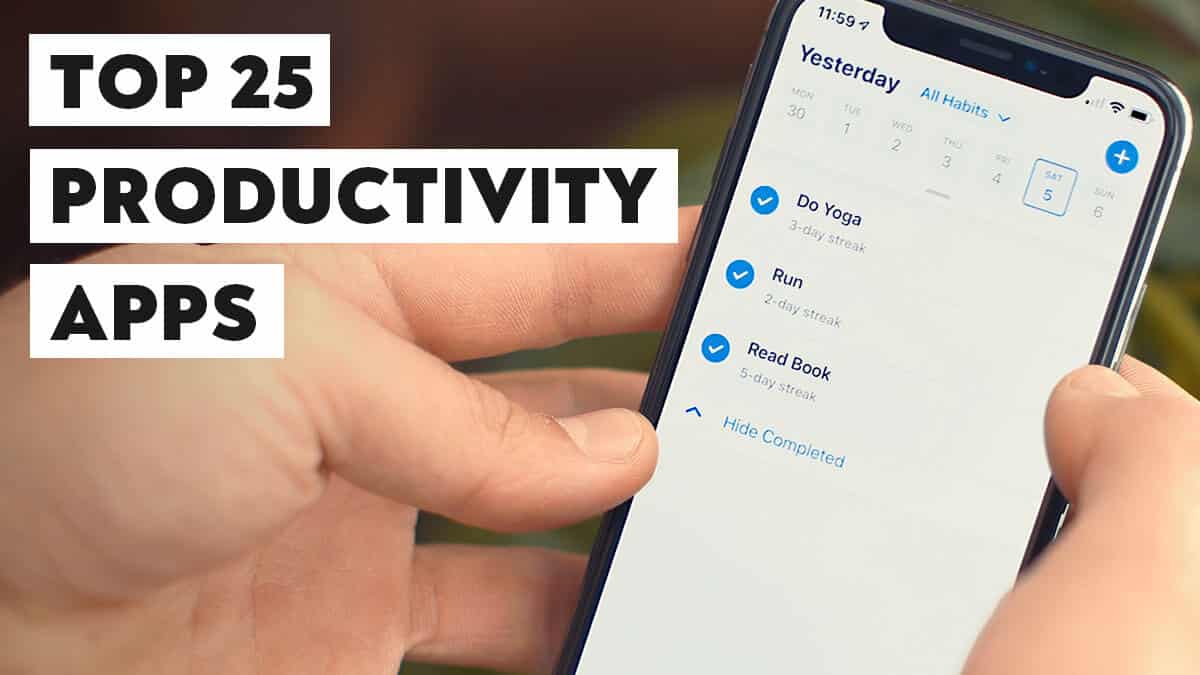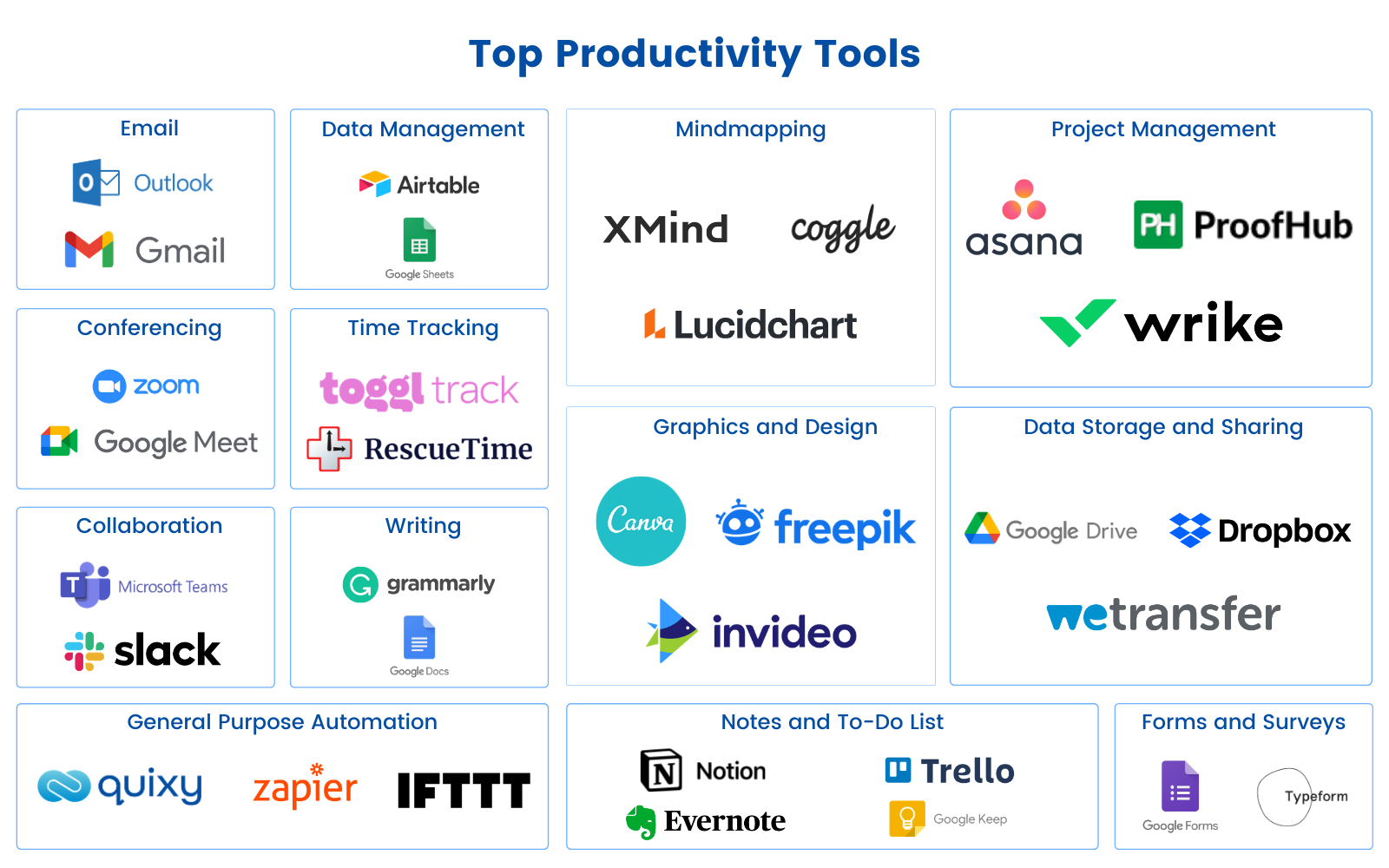Embark on a journey to discover the transformative power of the Best productivity apps for desktop. In today’s digital landscape, these tools have become indispensable allies for individuals and teams seeking to maximize their efficiency, organization, and overall productivity.
From task management and note-taking to collaboration and communication, the diverse array of productivity apps available for desktop empowers users to streamline their workflows, enhance their output, and achieve their goals with unparalleled ease.
Introduction

Productivity apps are software tools designed to enhance efficiency and organization in various aspects of work and personal life. These apps can streamline tasks, automate processes, and provide insights to help users achieve their goals more effectively.
For desktop users, productivity apps are particularly valuable as they offer a dedicated and stable platform for managing tasks, projects, and information. These apps can integrate with other desktop applications, providing seamless workflows and access to data from multiple sources.
Growing Demand
The demand for desktop productivity apps is continuously growing due to several factors, including the increasing number of remote and hybrid work arrangements, the need for improved collaboration and communication, and the desire to optimize productivity in a fast-paced digital environment.
According to a recent study by Gartner, the global market for productivity and collaboration software is projected to reach $63.4 billion by 2023, indicating the significant adoption and growth of these tools among desktop users.
Types of Productivity Apps for Desktop

Productivity apps for desktop can be categorized into various types, each serving specific functions to enhance productivity and efficiency. The following table provides an overview of common app categories, along with examples and their key features:
| App Category | App Name | Key Features | Pros and Cons |
|---|---|---|---|
| Task Management | Todoist |
| Pros:
Cons:
|
| Note-Taking | Evernote |
| Pros:
Cons:
|
| Collaboration | Slack |
| Pros:
Cons:
|
| Communication | Zoom |
| Pros:
Cons:
|
Benefits of Using Productivity Apps for Desktop

Productivity apps for desktop offer numerous advantages that can enhance workflow and optimize productivity. These apps streamline organization, facilitate collaboration, boost efficiency, and reduce stress, making them invaluable tools for professionals and individuals alike.
Improved Organization and Task Management
- Centralized task management: Productivity apps provide a single platform to manage tasks, projects, and schedules, eliminating the need for multiple lists and reminders.
- Customizable workflows: Users can tailor their workflows by creating custom categories, tags, and filters, ensuring tasks are organized in a way that suits their specific needs.
- Task prioritization and tracking: These apps enable users to prioritize tasks based on importance and urgency, track progress, and set deadlines, ensuring timely completion.
Enhanced Collaboration and Communication
- Real-time collaboration: Productivity apps facilitate real-time collaboration on documents, projects, and tasks, allowing team members to work together seamlessly.
- Shared calendars and schedules: Team members can share calendars and schedules to coordinate meetings, appointments, and deadlines, ensuring everyone is on the same page.
- File sharing and version control: Productivity apps allow users to share files and track changes, ensuring everyone has access to the latest versions and preventing conflicts.
Increased Efficiency and Productivity
- Automation and streamlining: Productivity apps offer automation features such as task scheduling, reminders, and templates, which streamline workflows and save time.
- Reduced distractions: These apps provide distraction-free workspaces, blocking notifications and other distractions, allowing users to focus on the task at hand.
- Improved time management: Productivity apps provide insights into time spent on tasks, helping users identify areas for improvement and optimize their time management.
Reduced Stress and Workload
- Workload management: Productivity apps help users manage their workload by breaking down tasks into smaller, manageable chunks, reducing feelings of overwhelm.
- Stress reduction: By providing a structured and organized approach to work, productivity apps can reduce stress levels and improve overall well-being.
- Improved work-life balance: These apps can help users set boundaries between work and personal life, preventing burnout and promoting a healthier work-life balance.
Considerations for Choosing the Right Productivity Apps for Desktop: Best Productivity Apps For Desktop
When selecting productivity apps for desktop, consider the following factors:
Compatibility
Ensure the app is compatible with your operating system and devices. Check if it supports multiple platforms if you use multiple devices.
Integration
Consider how well the app integrates with other tools and applications you use. Seamless integration can enhance productivity by streamlining workflows.
User Interface, Best productivity apps for desktop
The user interface should be intuitive and easy to navigate. A well-designed interface can save time and reduce frustration.
Cost and Subscription Models
Determine if the app fits your budget and subscription preferences. Some apps offer free or freemium versions, while others require paid subscriptions. Evaluate the features and value offered to make an informed decision.
Tips for Evaluating and Comparing Apps
- Research and read reviews from other users.
- Try out free trials or demos to experience the app firsthand.
- Compare different apps side-by-side to identify the one that best meets your needs.
Emerging Trends in Desktop Productivity Apps

The desktop productivity app landscape is constantly evolving, with new trends and innovations emerging all the time. Some of the most notable trends include:
- Artificial intelligence (AI) and machine learning
- Cloud-based collaboration
- Integration with wearable devices
Artificial Intelligence (AI) and Machine Learning
AI and machine learning are being used to power a new generation of desktop productivity apps that can automate tasks, learn from user behavior, and provide personalized recommendations. For example, AI-powered apps can:
- Schedule appointments and meetings
- Create and manage to-do lists
- Track time and expenses
- Analyze data and generate reports
Cloud-based Collaboration
Cloud-based collaboration tools are making it easier for teams to work together on projects, regardless of their location. These tools allow users to share files, collaborate on documents, and communicate in real-time. Some of the most popular cloud-based collaboration tools include:
- Google Workspace
- Microsoft 365
- Dropbox
- Slack
Integration with Wearable Devices
Wearable devices, such as smartwatches and fitness trackers, are becoming increasingly popular, and they are starting to be integrated with desktop productivity apps. This integration allows users to track their activity, receive notifications, and control their apps from their wearable devices.These trends are just a few of the many that are shaping the future of desktop productivity.
As technology continues to evolve, we can expect to see even more innovative and groundbreaking productivity apps emerge.
Closure

As the world of desktop productivity continues to evolve, the future holds exciting possibilities. Artificial intelligence, cloud-based collaboration, and integration with wearable devices are just a few of the trends shaping the landscape. By embracing these innovations, we can unlock even greater levels of productivity and unlock our full potential.
FAQ Insights
What are the key benefits of using productivity apps for desktop?
Productivity apps for desktop offer numerous benefits, including improved organization, enhanced collaboration, increased efficiency, reduced stress, and a more streamlined workflow.
How do I choose the right productivity apps for my desktop?
Consider factors such as compatibility with your operating system, integration with other tools, user interface, ease of use, cost, and subscription models when selecting productivity apps for your desktop.
